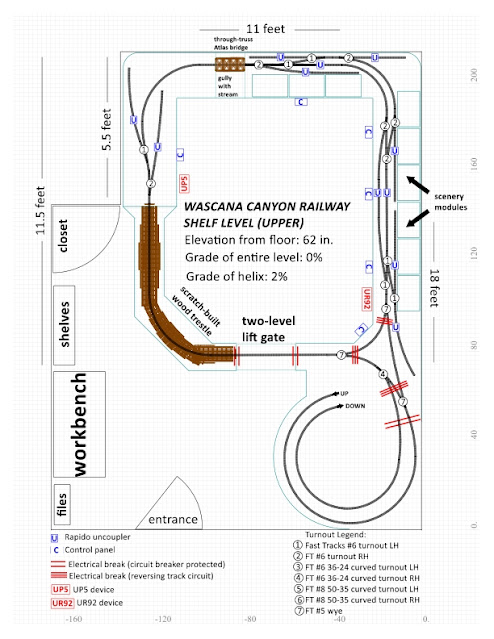In the period January through April 2019, I posted a series of seven articles about the design, construction and operation of what I call my "No Duck Mo" which is a Free-mo module ("mo") containing a swing-up lift bridge so people can pass through a Free-mo layout without having to duck underneath the modules ("no duck").
In March & April 2020 I introduced my current basement layout, the Wascana Canyon Railway ("WCR"). The WCR consists of three levels, the lower being along the wall and the middle and upper levels are along three walls and connect into a loop about 2/3 of the way down the room. Here are the track diagrams for the middle and upper levels:
Design Criteria
- Both gates must lift and lower simultaneously and lock safely into the raised position when the gate is lifted.
- Resistance to the force of gravity. Two gates, each of which would be about 30 inches long and around 11 inches wide, would be heavy because not only are there are two of them but they must also be sufficiently robust to resist sagging, twisting or warping. I wanted to be able to simply give the open gates a slight push to begin lowering gently without slamming shut. This is also a safety feature to avoid the gates smashing hard onto someone's head in the event that the gates become unlatched from their raised position while someone is walking through the opening.
- Flawless alignment of rails.
- Reliable track power to rails on both decks (the lower level is double track mainline and the upper level is single track) including power cutoff to 40 cm (1.3 feet) of rail on either side of the gate when it is open to prevent trains from falling into the abyss.
- Mechanical barriers that automatically close when the gate is opened and open when the gate is closed, again for the safety of rolling stock and to protect fragile egos, mine included.
- Warning lights to attract attention when the gate is open.








